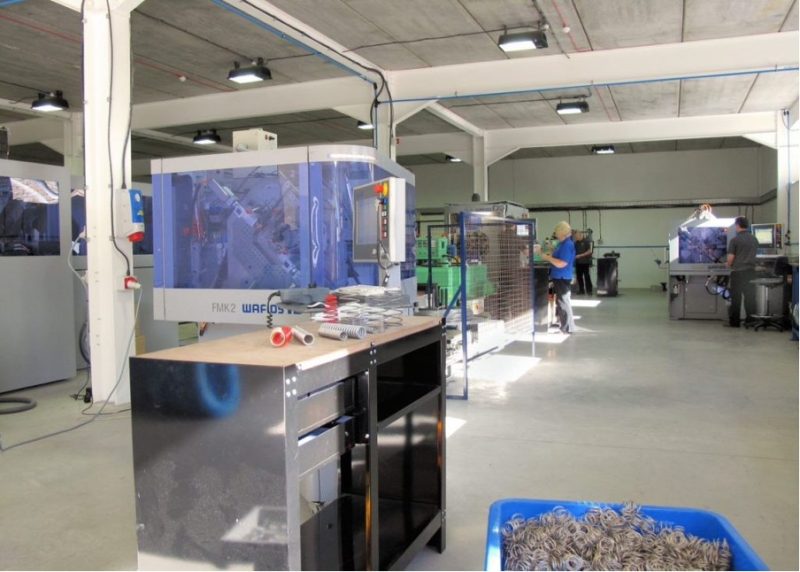One of the biggest challenges most manufacturers are facing is ensuring their carbon footprint is reduced as much as possible, whilst also maintaining high levels of productivity and product quality. Here, we will explore some of the simplest ways to reduce your company’s carbon footprint.

Your Carbon Footprint
Your company’s carbon footprint is the total amount of greenhouse gas produced to support human activity. One of the more popular greenhouse gases produced is carbon dioxide, which is where the term ‘carbon footprint’ comes from. Companies now commonly report Scope 1 (direct), Scope 2 (purchased energy) and the most important upstream/downstream emissions in Scope 3. Starting with a baseline makes the rest of the work targeted and measurable and regulators, customers and investors increasingly expect this level of transparency.
Why It’s Important
Carbon footprints are made up of greenhouse gases, such as carbon dioxide and methane. These gases trap heat in the atmosphere, driving global warming and contributing to extreme weather, rising sea levels, and melting ice caps. This makes cutting emissions not only an environmental responsibility but also a business imperative. The result is natural disasters including the melting of the ice caps, flooding, and increased risk of storms. Globally, energy-related CO₂ emissions reached a record of about 37.4 billion tonnes in 2023 (up roughly 1.1% on 2022), which underlines why decisive action at company and sector level remains necessary.
It’s important to note that ozone depletion and greenhouse-gas-driven warming are different phenomena: greenhouse gases trap heat and drive global warming and an increase in extreme events. The Intergovernmental Panel on Climate Change (IPCC) makes clear that human greenhouse-gas emissions are the primary driver of recent climate change and the rise in extremes such as heatwaves and heavy rainfall.
What You Can Do
There is so much that can be done on an individual and company-wide scale. You should always begin by questioning the use of materials in your life: does your business leave the lights on unnecessarily, are your staff recycling packaging properly, what can you do to reduce waste.
Recycling and material choices remain high-impact actions. Using recycled steel (secondary production) uses substantially less energy than producing steel from iron ore, industry estimates commonly cite energy savings in the order of 70–74% for scrap-based processes versus primary production, and this translates directly into carbon savings when you specify recycled feedstocks.
Practical steps manufacturers are taking in 2025 include measuring and reporting emissions, setting a public target, improving energy efficiency across plant and processes, and switching to renewable electricity through rooftop solar or certified contracts (corporate Power Purchase Agreements). These actions are not cosmetic, they reduce cost, stabilise energy budgets and reduce regulatory risk.
Carbon Neutral Country
A carbon-neutral country is one that balances the greenhouse gases it produces with actions that remove or offset those emissions, bringing its net output down to zero. This doesn’t mean stopping all emissions entirely but rather ensuring that any unavoidable emissions are counteracted with sustainable practices, such as renewable energy adoption, large-scale recycling, or natural solutions like reforestation.
For businesses, carbon neutrality isn’t just an abstract national goal, it translates into concrete choices that can also improve reputation and long-term resilience. For example, a company might:
- Replace fossil fuel–powered fleet vehicles with electric or hybrid alternatives.
- Invest in energy efficiency across offices, warehouses, or factories to reduce unnecessary consumption.
- Support or partner with reforestation projects, helping restore natural carbon sinks that benefit both the climate and biodiversity.
- Choose renewable energy suppliers or install solar panels and other clean energy systems on-site.
On a national scale, achieving neutrality often involves large-scale initiatives such as expanding renewable energy infrastructure, protecting and replanting forests, and encouraging low-carbon industries. But for these efforts to succeed, they need to be mirrored at the organisational and even facility level.

This is where companies can show true leadership. Translating national commitments into business action means:
- Setting carbon budgets at the facility level so that each plant or office has clear reduction targets.
- Including low-carbon criteria in procurement decisions, ensuring that suppliers align with sustainability standards.
- Making supplier engagement and climate performance part of staff and leadership evaluations, tying accountability directly to business success.
By doing so, businesses not only contribute to national climate goals but also build trust with consumers, investors, and communities. Backing one of these initiatives, and making it visible, shows the public that your company isn’t just talking about climate action, it’s actively delivering measurable progress.

Our Efforts in Environmental Sustainability
We believe that a carbon neutral aim is an honourable one, and we have the awards to prove that we’re doing our bit. In 2025 we won the SME Business Category at the Yorkshire Sustainability Excellence Awards. We were also named Net Zero Contributor of the Year at the MMMA Gala Awards 2024 and won both the Sustainability Award and the Overall Business of the Year at the 2024 Keighley & Airedale Business Awards.
Start your Sustainability Journey
We will always consider our environmental impact when introducing new initiatives, but we can only hope that other businesses will endeavour to do the same. Be more eco-friendly by sourcing your products from eco-conscious companies and reduce your own footprint by backing renewable energy initiatives. Get in touch with us today to discuss your project and be confident that you are using a sustainable manufacturer.




